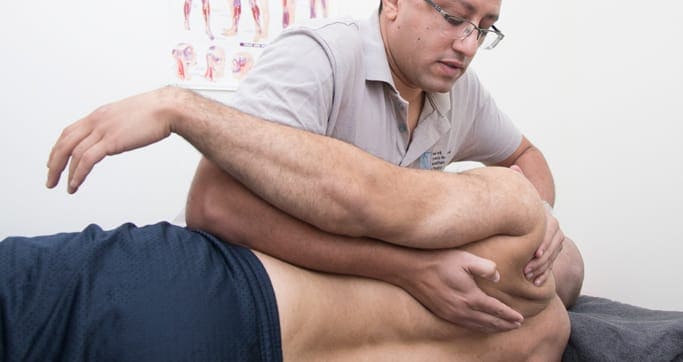August 14, 2023

Muscle pain is a highly common affliction, especially if you are physically active. In fact, muscle pain may become such an integral part of your active lifestyle that you simply ignore it, brushing it off as a natural consequence of staying in shape. However, chronic and debilitating muscle pain is not normal, nor should it be ignored.
When your body is in motion, your muscles do not act independently of one another, but rather work as a kinetic chain to imbalanced muscle tension in your opposing shoulder.
Muscle pain is nothing more than a cognitive perception conveyed from your peripheral nervous system to initiate and control movement.
Myoreflex therapy acknowledges the intricate interrelationship between your muscles and nervous system, and takes a holistic approach to treating pain.
Myoreflex Therapy focuses on muscle insertions, the junctions where the ends of muscles attach via tendons to bones. When function is impeded by overuse or injury, muscle pain is triggered, sometimes far from the site of dysfunction.
Myoreflex therapy does not treat isolated muscles or points of pain, but instead encompasses an entire muscular network. To function properly, muscle networks rely on a harmonious balance of muscle tension. This balance can be disrupted by:
When a muscular imbalance develops, pain can result in different areas of your body.
Myoreflex therapy stimulates specific pressure points at the muscle-tendon interface, transmitting a signal to the relief of pain in soft tissue structures.
Myoreflex therapy is effective for treating a broad range of physical and psychological diseases and disorders. Common conditions often treated by myoreflex therapy include:
Myoreflex therapy is painless and non-invasive, yet pain is often alleviated after the very first treatment. Additional treatments reinforce functional neuromuscular patterns, ensuring that pain does not return.
Myoreflex therapy is just one of an exciting array of alternative treatments and therapies practiced by the professional team at NYDNRehab. After a comprehensive interview and a complete assessment of posture, gait and range of motion, your therapist will design a personalized protocol for treatment that may be multi-modal, incorporating the best therapies based on your diagnosis.
Do not allow life’s aches and pains to the fullest. You will quickly see why NYDNRehab is the very best in NYC for physical therapy treatment.
Dr. Lev Kalika is a world-recognized expert in musculoskeletal medicine. with 20+ years of clinical experience in diagnostic musculoskeletal ultrasonography, rehabilitative sports medicine and conservative orthopedics. In addition to operating his clinical practice in Manhattan, he regularly publishes peer-reviewed research on ultrasound-guided therapies and procedures. He serves as a peer reviewer for Springer Nature.
Dr. Kalika is an esteemed member of multiple professional organizations, including: